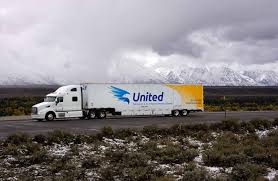
Every year, in January, United Van Lines (UVL) releases its annual “National Movers Study.” UVL is one of the largest moving companies in the nation. For its study, UVL looks at all of its interstate moves, and calculates the share of outbound shipments for each state. We include that data in our “Data-Z” website, going back every year to 1978 (when UVL started doing its annual study).
In its latest study, for 2020, the five states with the highest outbound shipments percentage were (in order from highest to lowest) New Jersey, New York, Illinois, Connecticut and California. The five states with the lowest percentages were (from lowest to highest) Idaho, South Carolina, Oregon, South Dakota, and Arizona.
What characteristics do outbound states (where people are fleeing) share compared with inbound states?
I calculated the average outbound shipments ranking of the 48 continental United States in the last five years and compared it to a variety of other rankings you can calculate with data we compile in Data-Z, including:
WalletHub’s Tax Burden
Balanced Budget Frequency
TIA’s Taxpayer Burden
Lawyers per 10,000 Residents
ALEC’s Economic Outlook Ranking
TIA’s Zombie Index
Age of State, Based on Year Admitted to Union
Population
Democratic Share of Vote for President Last 5 Elections
Average Winter Temperature
The ordering of the list above is not an accident. From top to bottom, those 10 characteristics are ranked in terms of how closely correlated they are to the outbound shipments average for the last five years as reported by UVL.
Average Winter Temperature has the lowest correlation (the least significant relationship) with outbound moves, among these ten factors. People are moving to warmer states, on average, but other factors have a much closer relationship with moving trends in recent years.
The American Legislative Exchange Council calculates an “Economic Outlook Ranking” for the 50 states. In the last five years, states scoring well on their ranking also have had significant relative inbound migration, according to UVL.
People are moving away from lawyer-intensive states. There is a longer story there.
The last three variables have the strongest relationship with UVL’s migration trends in recent years. Truth in Accounting (TIA) calculates a “Taxpayer Burden” based on our methods for assessing state (and city) government financial position. A high “Taxpayer Burden” reflects consequences facing future taxpayers. And in recent years, states that have accumulated high TIA “Taxpayer Burdens” have had significant outmigration.
WalletHub also calculates a Tax Burden, but it is based on current tax payments as a share of current income in the state. People are moving away from states with high WalletHub “Tax Burdens,” too.
“You can me now, or pay him later,” was the line on an old Fram Oil Filter commercial. Either way, taxpayers are seeking friendlier places.
The factor stuck in between the two taxpayer burden measures in the list above is most interesting – it is based on how frequently state governments have kept accrual expenses below accrual revenue, annually, in the last 15 years. People are moving away from states whose governments don’t truly “walk the talk” on balanced budget requirements.
How about UVL’s latest results? What do the states with the highest outmigration in 2020 have in common compared to the states with the best migration results?
The “Average Winter Temperature” rankings are almost the same, on average, for the two groups of five states. The biggest differences between the average rankings for those two groups of five states each are for ALEC’s Economic Outlook Ranking, TIA’s Taxpayer Burden, Truth in Accounting’s Zombie Index, Lawyers per 10,000 Residents, WalletHub’s Tax Burden, and Democratic Share of Vote For President.
We will be updating our Data-Z website to include all of UVL’s latest results soon.

